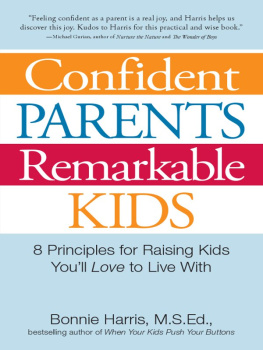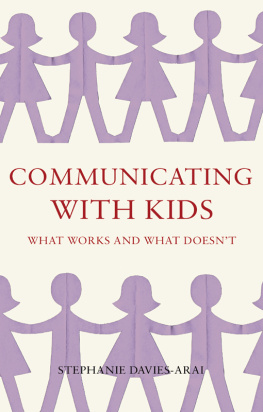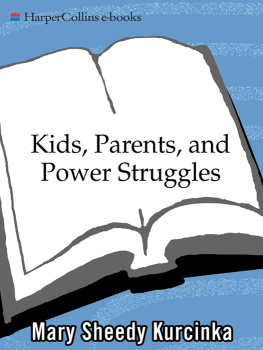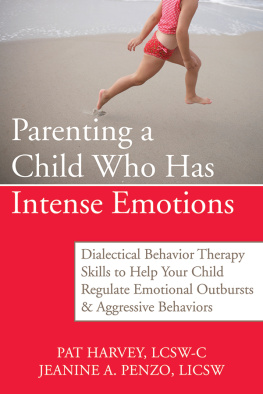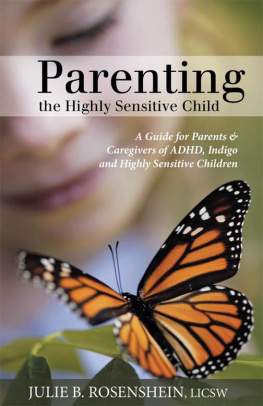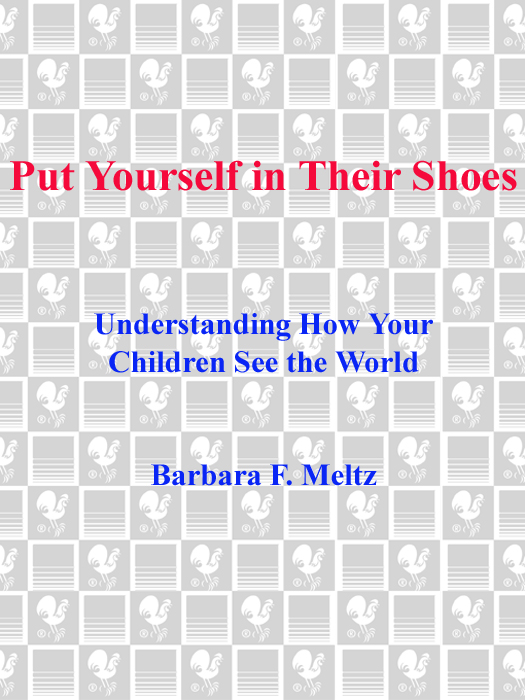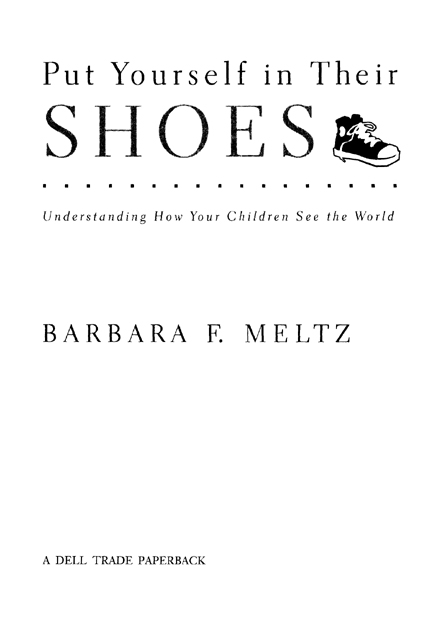Someone once said that the best way to approach young children is as if they are distinguished visitors from another planet who have just arrived and dont know the ropes yet. The key is to see the world through their eyes so that you can help them learn how to make their way in the world. It takes a blend of knowledge and sensitivity that I call intelligent empathy. Barbara Meltz has it. She has done her homework and she deserves an A+ for her book.
James Garbarino, Ph.D., co-director,
Family Life Development Center,
Cornell University
Barbara Meltz is the keenest connoisseur of professional advice on raising children I know. This book is a lively, sensible, solidly grounded compilation of dos and donts that speak to every parents concerns.
Eli H. Newberger, M.D., director,
Family Development Program,
Childrens Hospital (Boston, Mass.)
A DELL TRADE PAPERBACK
Published by
Dell Publishing
a division of
Random House, Inc.
1540 Broadway
New York, New York 10036
Portions of the material in this book were
reprinted with permission of The Boston Globe.
Copyright 1999 by Barbara F. Meltz
All rights reserved. No part of this book may be reproduced or transmitted in any form or by any means, electronic or mechanical, including photocopying, recording, or by any information storage and retrieval system, without the written permission of the Publisher, except where permitted by law.
The trademark Dell is registered in the U.S. Patent and Trademark Office.
Library of Congress Cataloging in Publication Data
Meltz, Barbara.
Put yourself in their shoes : understanding how your children see the world / Barbara Meltz.
p. cm.
eISBN: 978-0-307-78878-8
1. Parent and child. 2. ChildrenPsychology. 3. Parenting. I Title.
HQ755.85.M45 1999
306.874dc21 98-38609
v3.1
To Eli. Without you,
this wouldnt have happened.
Acknowledgments

Technically, this book began when my son did. At the time, I was the New England editor at The Boston Globe, typically working sixty hours a week. Even during my pregnancy I knew that once I became a mother, I wanted to work part-time but I couldnt think of what to do. Standing in the middle of the Globe newsroom one afternoon, I poured my heart out to my colleague and friend Evelynne Kramer. You know what the Globe needs? she asked. A parenting column. And you could do that three days a week. Thus began the column that led to this book. The late Kirk Scharfenberg, my boss at the time, wholeheartedly endorsed the idea, as did Jack Driscoll, then editor of the Globe. In what is perhaps a touch of journalistic irony, Evelynne became the first editor of Child Caring; that the column got off to such a good start is due in no small part to the vision she had for what it could be. There are other people at the Globe I want to thank; Editor Matt Storin, for his support and friendship for more than twenty years; my current editor, Fiona Luis; Assistant Managing Editor for Features Mary Jane Wilkinson; Managing Editor Greg Moore; and my friend and colleague Ellen Goodman, who endured many tte--tte lunches where I picked her brain about how the heck you write a book. I thank also the many other Globe colleagues, too numerous to mention, who have shared their parenting woes and wonders so that I could turn them into fodder for my column. A very big thank you as well to all the readers whose support, enthusiasm, questions, ideas and fan mail have kept the column going for more than ten years.
I can never properly thank all the hundreds of sources I have interviewed who made this book possible: researchers, clinicians, teachers, psychologists, pediatricians, psychiatrists, professors and parents. But there are a few Id like to single out. Pediatrician T. Berry Brazelton was one of the first professionals I interviewed for the column. Over lunch at the Harvest restaurant in Cambridge, he told me the column was going to fill a void for parents and that someday Id write a book too. Barbara Willer of the National Association for the Education of Young Children has been a constant and invaluable resource. Professor Diane Levin of Wheelock College has helped me refine my thinking about child development and shes become a friend in the process. A special thanks to parent educator Linda Braun, director of Families First in Cambridge, who has never laughed at any of my questions and always made herself available to me, sometimes at great inconvenience. A giant thank you to parent educator Gloria Jurkowitz of Scranton, Pennsylvania, who was a frequent sounding board over the years and especially for the book. Her advice, insight, and wisdom have particular meaning to me because she is also my aunt.
When it comes to family and friends, I have been blessed. Thanks first and foremost to my husband, who, as the project neared completion, endured far more take-out meals and trips to the grocery store than he liked; to my son, the best kid on earth, who facilitated this turn in my career and taught me so much; to my mom, who has been an unfailing cheerleader all my life; and to my dad, who died years before I wrote this but whose influence is here, nonetheless. Thanks also to my niece Ariel, and nephews Adam and Michael, whose unseen influence is throughout the book, and to their mother and my sister, Ellen Thibault. This book absolutely wouldnt have happened without the prodding of my cousin Deborah Jurkowitz, who also happens to be a book editor par excellence. Although the idea for a book had been floating around in my head for years, it didnt crystallize until Debbie sat down with pencil and pad and helped me organize my thoughts. She was with me every step of the way, always dispensing sage advice. To my friends Betsy Hochberg, Donna Furlong Eidson, Patti Doten, Judith Robinson, Cheryl Di Paolo, Frank Grundstrom and Joan KochI couldnt have done this without you! Last but not least, thanks to a terrific and attentive agent, Nancy Yost, and to my book editors, Diane Bartoli, who defies publishing stereotypes by returning calls immediately, and Mary Ellen ONeill, who helped me birth this book even as she gave birth to a baby!
Newton, Massachusetts
July 1998
Contents

Introduction

O n a wintry January morning, I stood transfixed in the lobby outside the gym of the Jewish Community Center while a twoish-year-old had a temper tantrum. It wasnt the toddler I was watching, though. It was his mother. She was a few steps behind him when he threw himself on the floor, crying and thrashing, and I was a few steps behind her. Without a word, she dropped her gym bag and baby pack to the floor and lowered herself down next to him. She didnt talk to him or touch him, she just got lower and lower, first squatting, then sitting, then lying on her stomach, until her head was at the same level as her sons and their noses were practically touching. Pedestrian traffic was unusually heavy that morning, but no one broke stride as they sidestepped the pair, and the mother seemed as nonplussed about them as they were about her.




